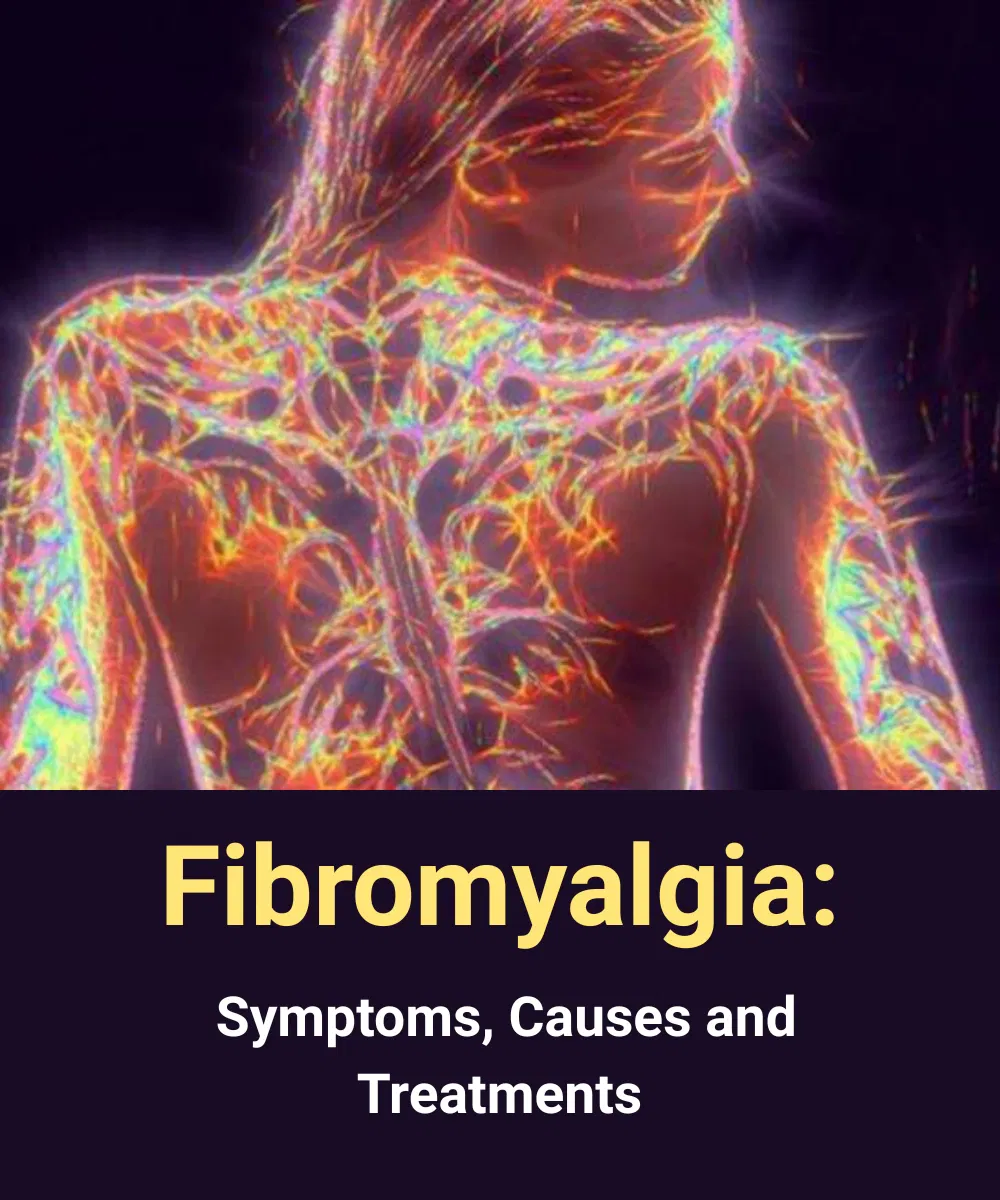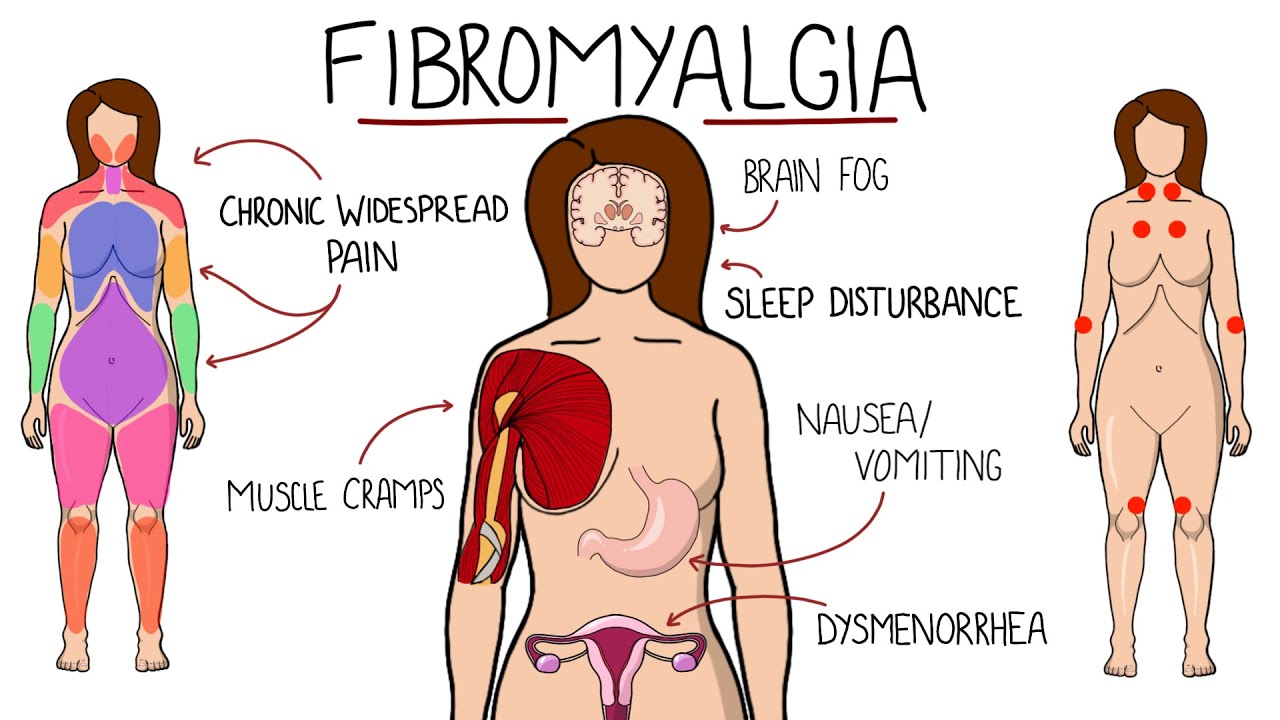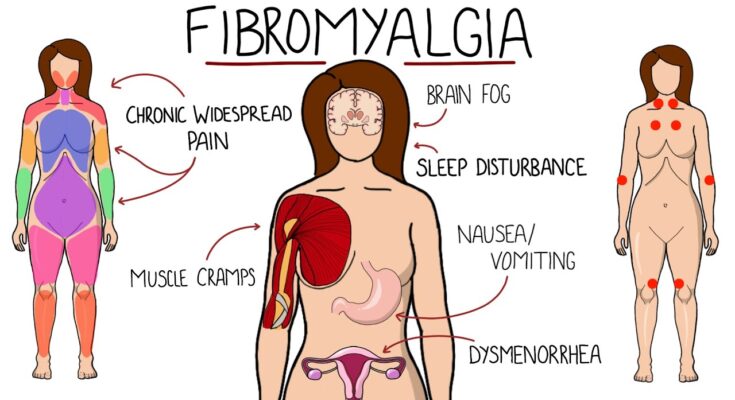Fibromyalgia is an often misunderstood and elusive condition that affects millions globally. Imagine experiencing persistent pain, exhaustion, and mental fog, all without clear reasons why. That’s the reality for people living with fibromyalgia—a chronic condition that goes beyond muscle aches, and can infiltrate every part of your life. Let’s break down what fibromyalgia really is, the causes behind it, and most importantly, the treatment strategies that can bring relief.
What is Fibromyalgia?
Fibromyalgia is a complex syndrome that causes widespread pain throughout the body. It doesn’t just affect your muscles and joints, but it alters how your brain processes pain signals, making every sensation feel amplified. The condition is often described as “pain amplification syndrome” because it involves a heightened sensitivity to pain, even from stimuli that wouldn’t normally cause discomfort.

But fibromyalgia isn’t just about pain—it’s an emotional and mental rollercoaster, too. From disrupted sleep patterns to cognitive fog, individuals with fibromyalgia live with constant challenges that often go unseen.
What Are the Common Symptoms of Fibromyalgia?
If you’ve been wondering whether you might have fibromyalgia, here’s a snapshot of the symptoms that most commonly appear:
- Widespread Pain – The hallmark symptom. A dull ache that lasts for months, often in muscles, ligaments, and tendons.
- Stiffness & Inflexibility – The body feels tight and sore, especially after periods of rest.
- Fibro Fog – A frustrating symptom where concentration becomes challenging, leading to forgetfulness and mental cloudiness.
- Extreme Fatigue – No matter how much you sleep, it never feels like enough. Fatigue is unrelenting.
- Sleep Disturbances – Poor-quality sleep is common. Individuals often wake up feeling just as tired as when they went to bed.
- Tingling & Numbness – Especially in the hands and feet, leading to sensations of “pins and needles.”
- Headaches – These can range from mild to severe and are often linked with tension and migraines.
- Restless Legs Syndrome – An uncontrollable urge to move your legs while resting, making it hard to fall asleep.
- Irritable Bowel Syndrome (IBS) – Digestive problems, including bloating, diarrhea, and constipation, often accompany fibromyalgia.
- Sensitivity to Temperature & Touch – Extreme sensitivity to both hot and cold, and touch that might be painful for others may cause severe discomfort.

The struggle doesn’t stop there. Other issues can include dizziness, skin rashes, flu-like symptoms, chest discomfort, and sudden weight fluctuations.
What Causes Fibromyalgia?
The exact cause of fibromyalgia is still largely a mystery, but experts believe it’s a combination of genetic, environmental, and neurological factors. Some possible contributors include:
- Trauma (Physical or Emotional) – A history of accidents, injuries, or even stress-related emotional trauma can trigger fibromyalgia in susceptible individuals.
- Autoimmune Conditions – People with conditions like rheumatoid arthritis or lupus are more prone to developing fibromyalgia.
- Nervous System Abnormalities – Abnormal processing of pain signals by the central nervous system could be one of the reasons why people with fibromyalgia experience pain at higher intensities.
- Genetics – If fibromyalgia runs in your family, you may be more likely to develop it yourself.
- Repetitive Injuries – Repeated physical strain on your body can contribute to the onset of fibromyalgia.
It’s important to know that fibromyalgia is not caused by laziness, weakness, or poor mental health. It’s a real condition, and those who suffer from it need support and understanding.

How to Manage Fibromyalgia: Treatment Options
Managing fibromyalgia is a journey, and there’s no one-size-fits-all solution. Each individual’s experience with fibromyalgia can vary, meaning treatment plans must be highly personalized. Here’s a rundown of the treatments that are showing promise in helping people manage the condition:
- Exercise (Low-Impact): Regular, gentle exercises like walking, swimming, or yoga can help increase flexibility and reduce pain. Exercise also helps to combat fatigue and improve mood.
- Acupuncture: A traditional Chinese medicine technique that involves inserting fine needles into specific points on the body. Many people with fibromyalgia have reported improved pain relief after acupuncture sessions.
- Massage Therapy: A good massage can help alleviate muscle stiffness and improve circulation, offering significant relief from pain.
- Cognitive Behavioral Therapy (CBT): A form of psychotherapy designed to help people change negative thought patterns that can exacerbate stress, pain, and depression.
- Chiropractic Care: Spinal manipulation and other chiropractic treatments can help improve body alignment, ease pain, and promote overall well-being.
- Stress Management Techniques: Mindfulness, meditation, and breathing exercises can help manage the emotional stress that often accompanies fibromyalgia.
- Physical Therapy: A physical therapist can work with you to improve strength, posture, and flexibility to reduce pain and prevent further injury.
- Medications: Doctors may prescribe medications like antidepressants, nerve pain medications (such as gabapentin), muscle relaxants, and pain relievers. These can help manage the symptoms and improve quality of life.
- Living with Fibromyalgia: The Road to Relief: Fibromyalgia is a lifelong condition, but with the right treatment plan and support system, people can live a fulfilling life. It’s important to work closely with healthcare providers, such as rheumatologists, physical therapists, and mental health professionals, to create an approach that fits your unique needs.
While fibromyalgia may never fully go away, the right combination of therapies can make a world of difference. From exercise to medications, lifestyle changes to therapy, there are many ways to manage this complex condition. If you’re living with fibromyalgia, know that you are not alone, and relief is possible. Every step you take toward understanding your body and finding what works for you is a step toward better health.
Remember: It’s not just about surviving fibromyalgia—it’s about thriving, with support, self-care, and a personalized treatment plan that lets you live your best life, despite the challenges.




